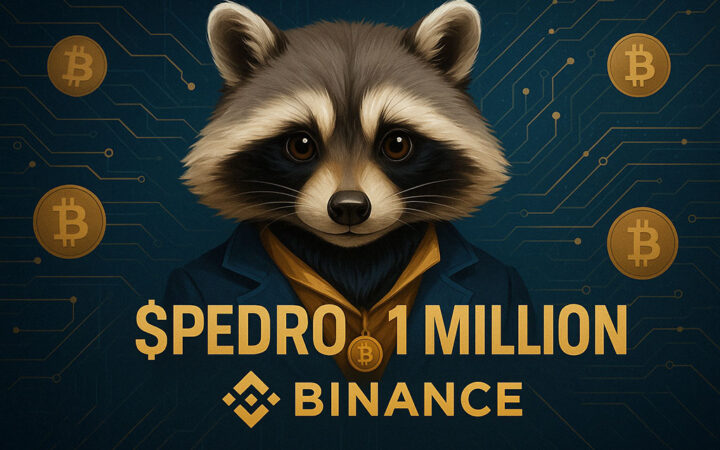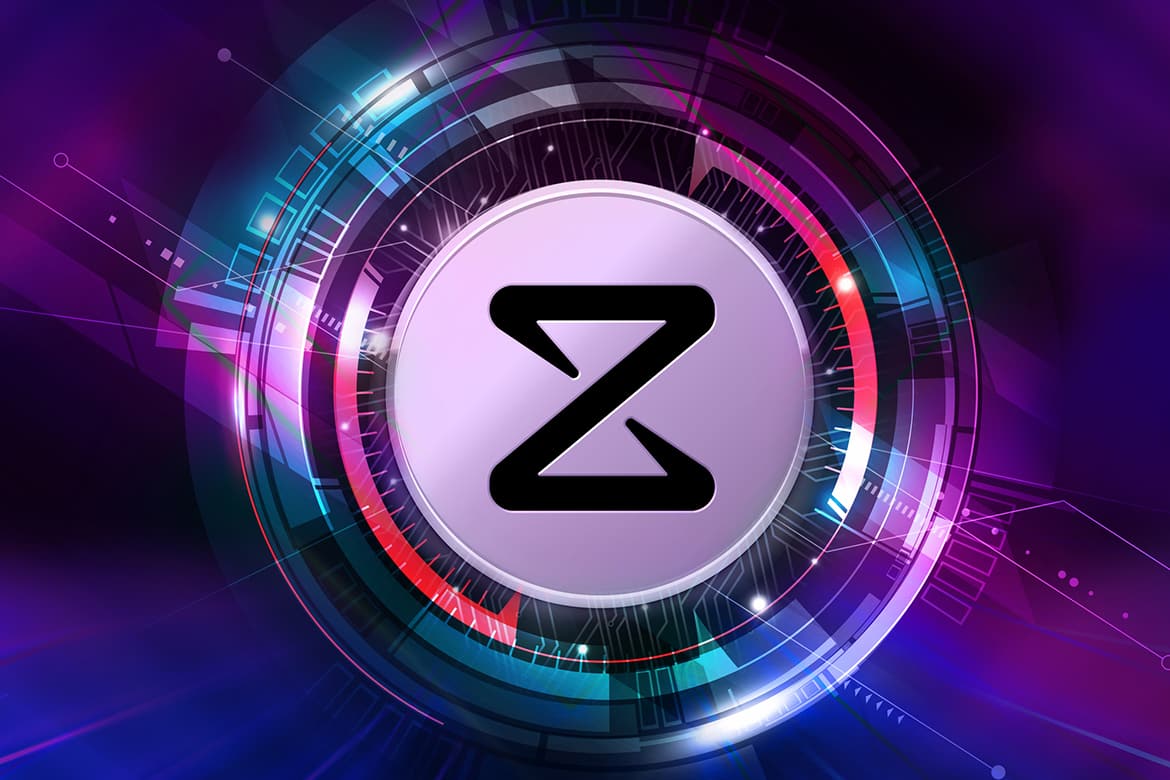
Is Qubetics The Next Crypto to Hit $1? As Near Protocol and Polygon Are Stealing the Spotlight in 2025
/Qubetics/ – It feels like every week, there’s a new crypto project promising to be “the next big thing.” Some vanish as quickly as they appear, while others shake up the industry. In 2025, the crypto world is evolving faster than ever, with projects like Near Protocol, Polygon, and Qubetics ($TICS) making major waves. While Near and Polygon have built solid reputations, Qubetics is proving to be the real game-changer.
Near Protocol and Polygon have had their moments in the spotlight. They’ve solved crucial blockchain scalability problems, helped businesses transition to Web3, and made decentralized applications (dApps) more accessible. But is their reign starting to fade? That’s where Qubetics steps in — introducing cutting-edge blockchain solutions that set it apart from the competition. With its QubeQode IDE, it’s revolutionizing how blockchain development is done.
Qubetics ($TICS): The Future of Blockchain Development and Digital Finance
Qubetics is more than just another crypto project — it’s a full-fledged blockchain ecosystem solving real-world problems. One of the biggest pain points in blockchain adoption is the complexity of development. Enter QubeQode IDE, a developer-friendly integrated development environment (IDE) designed to make blockchain coding easier, faster, and more efficient for businesses, professionals, and individuals.
Think about it. Right now, developing blockchain applications is like navigating a maze with blindfolds. Even experienced developers struggle with fragmented tools and inconsistent documentation. QubeQode IDE simplifies this by offering a seamless, all-in-one platform where developers can build, test, and deploy blockchain applications without the usual headaches.
Beyond development, Qubetics is making waves with its financial ecosystem. The best crypto presale is in its 23rd stage, with over 483 million tokens sold to over 20,800 holders, raising over $13.5 million. At $0.0888 per token, this could be one of the most promising investments of the year. Analysts predict that $TICS could reach $1 post-presale, delivering an astonishing 1026% ROI. And if it hits $15 after the mainnet launch, we’re talking about a 16,791% ROI. Those numbers aren’t just hype — they’re based on real momentum and adoption.
Near Protocol: A Solid Contender, But Can It Keep Up?
Near Protocol has earned its place among top blockchain networks by focusing on scalability, usability, and developer experience. It introduced sharding technology, enabling faster transactions at lower costs. This made Near an attractive choice for developers looking to build high-performance dApps.
But here’s the thing — while Near solved some major blockchain inefficiencies, it’s starting to feel… well, a little familiar. The industry is evolving beyond just speed and lower gas fees. Developers are now looking for an all-in-one toolkit that doesn’t require patching together multiple platforms. This is exactly where Qubetics shines. Its QubeQode IDE isn’t just an improvement; it’s a completely new way of building on blockchain.
While Near Protocol remains a strong player, Qubetics is bringing a fresh, much-needed approach to blockchain development, making it the more attractive choice for the future.
Polygon: The Layer 2 King Faces New Challenges
Polygon has long been known as Ethereum’s “right-hand man.” By acting as a Layer 2 scaling solution, it has reduced congestion and slashed transaction costs for Ethereum users. This has allowed Polygon to onboard some of the biggest brands into Web3, including Starbucks, Reddit, and Nike.
But here’s the catch — Ethereum itself is evolving. With upgrades like Ethereum 2.0, the need for Layer 2 solutions may decrease over time. Plus, competition in the scalability space is heating up. Avalanche, Solana, and now Qubetics are offering alternatives that could make Polygon’s role less dominant in the coming years.
Qubetics isn’t just about scaling — it’s about streamlining the entire blockchain experience. By focusing on both usability and developer accessibility, it’s tackling the crypto industry’s biggest bottlenecks in a way Polygon simply doesn’t.
What Makes QubeQode IDE a Game-Changer?
QubeQode IDE isn’t just another coding tool — it’s an entire ecosystem built to make blockchain development easier for everyone. Whether you’re a seasoned developer, a startup looking to integrate blockchain, or just someone curious about Web3, QubeQode IDE removes the barriers that have made blockchain adoption so slow.
Imagine being able to build, test, and deploy blockchain apps without needing multiple platforms or extensive coding knowledge. This kind of accessibility could open the floodgates for mass blockchain adoption, allowing businesses of all sizes to leverage the power of decentralized technology. From finance to gaming to supply chain management, the possibilities are endless.
Final Thoughts: Why Qubetics Stands Out in 2025
Near Protocol and Polygon have undeniably shaped the crypto industry. They’ve tackled scalability, brought in major partnerships, and provided much-needed infrastructure for blockchain growth. But the game is changing. The next wave of crypto projects needs to focus on accessibility, innovation, and real-world adoption — and Qubetics is leading that charge.
With its QubeQode IDE, seamless blockchain integration, and an exploding presale, Qubetics is proving to be the next crypto to hit $1. If you missed out on Near or Polygon when they were taking off, here’s your second chance. Don’t sit on the sidelines — this might just be your golden ticket.
For More Information: Qubetics, Telegram, Twitter.
FAQs
- What makes Qubetics ($TICS) the next crypto to hit $1?
Qubetics is revolutionizing blockchain development with its QubeQode IDE, making it easier for businesses and developers to build on blockchain. Its strong presale performance and unique approach make it a top contender for rapid growth. - How does Qubetics compare to Near Protocol?
While Near Protocol improved scalability with sharding, Qubetics is going beyond that by simplifying blockchain development. QubeQode IDE makes it more accessible for developers, giving it a significant edge. - Why is Qubetics a better investment than Polygon?
Polygon focuses on Ethereum scalability, but with Ethereum upgrades on the horizon, its dominance could decline. Qubetics is offering a more comprehensive blockchain solution, positioning it for long-term success. - What is the current price of $TICS?
In its 23rd presale stage, $TICS is priced at $0.0888, with over 483 million tokens sold and $13.3 million raised. - How do I invest in Qubetics?
You can participate in the ongoing presale by purchasing $TICS tokens directly from the official Qubetics platform.
Disclaimer: This publication is sponsored. Coinspeaker does not endorse or assume responsibility for the content, accuracy, quality, advertising, products, or other materials on this web page. Readers are advised to conduct their own research before engaging with any company mentioned. Please note that the featured information is not intended as, and shall not be understood or construed as legal, tax, investment, financial, or other advice. Nothing contained on this web page constitutes a solicitation, recommendation, endorsement, or offer by Coinspeaker or any third party service provider to buy or sell any cryptoassets or other financial instruments. Crypto assets are a high-risk investment. You should consider whether you understand the possibility of losing money due to leverage. None of the material should be considered as investment advice. Coinspeaker shall not be held liable, directly or indirectly, for any damages or losses arising from the use or reliance on any content, goods, or services featured on this web page.









